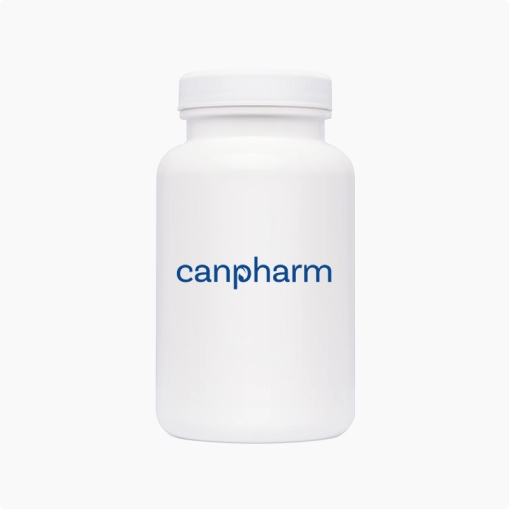
Glyxambi (Empagliflozin/Linagliptin)
| Dose | Size & Price | Qty |
|---|
-
Description
-
Reviews (0)
-
Related Products
-
Related Conditions
Fact Table
| Fact Table | |
|---|---|
| Formula | Empagliflozin: C23H27ClO7 Linagliptin: C25H28N8O2 |
| License | FDA approved |
| Bioavailability | Empagliflozin: ~78% Linagliptin: ~30% |
| Legal status | Prescription Drug |
| Chemical Name | Empagliflozin: (2S,3R,4R,5S,6R)-2-[4-Chloro-3-[[4-[[(3S)-tetrahydrofuran-3-yl]oxy]phenyl]methyl]phenyl]-6-(hydroxymethyl)oxane-3,4,5-triol Linagliptin: 8-[(3R)-3-Amino-1-piperidinyl]-7-(2-butyn-1-yl)-3-methyl-1-[(4-methylquinazolin-2-yl)methyl]-3,7-dihydro-1H-purine-2,6-dione |
| Elimination half-life | Empagliflozin: ~12 hours Linagliptin: ~12 hours (terminal half-life up to ~120 hours) |
| Dosage (Strength) | 10mg/5mg, 25mg/5mg tablets (Empagliflozin/Linagliptin) |
| Pregnancy | Consult Doctor (Limited data; not recommended during pregnancy) |
| Brands | Glyxambi |
| Protein binding | Empagliflozin: ~86% Linagliptin: ~70–99% |
| PubChem CID | Empagliflozin: 11949646 Linagliptin: 10096344 |
| MedlinePlus | Not available |
| ChEBI | Empagliflozin: 859150 Linagliptin: 688958 |
| ATC code | A10BD20 |
| DrugBank | Empagliflozin: DB09038 Linagliptin: DB08882 |
| KEGG | Empagliflozin: D10127 Linagliptin: D09515 |
| Routes of administration | By mouth |
Glyxambi is a combination diabetes treatment medication used for patients with Type 2 diabetes. It lowers blood sugar levels and reduce the associated risks of heart failure, stroke, or diabetic neuropathy and it will commonly be prescribed to be taken alongside with Metformin. Empagliflozin is a sodium-glucose co-transporter 2 inhibitor drug and Linagliptin is a dipeptidyl peptidase-4 inhibitor drug and these two active ingredients can promote lower A1C scores for people. You can by Glyxambi with a prescription here at Canpharm.
Directions
Standard dosage is to take Glyxambi 1x daily in the morning, with or without food. Take medication exactly as indicated in your prescription.
Ingredients
The active ingredients in Glyxambi are Empagliflozin and Linagliptin
Cautions
Let your doctor know of any history of type 1 disease, kidney or pancreas dysfunction, urinary tract infections, genital infections, or diabetic ketoacidosis before starting on Glyxambi medication
Avoid excessive alcohol consumption while using this medication
Women who are pregnant or breastfeeding should only use this medication if their doctor approves it
Be aware of medication expiry date
Interactions
Negative drug interactions may occur between Glyxambi and other Rx or OTC medications, including chlorthalidone, furosemide, hydrochlorothiazide, spironolactone, glyburide, glipizide, and glimepiride. Let your doctor know of all medications you are currently taking before getting a prescription and proceeding to buy Glyxambi online.
Side Effects
Glyxambi side effects may occur, and some users may experience increased thirst, nauseas, joint pain, increased urination, skin blisters, or upper respiratory tract infection. If side effects are seen you may want to discontinue use and meet with a doctor again to discuss Type 2 diabetes treatment medication alternatives and a pharmacist for a lower Glyxambi price.
Frequently Asked Questions about Glyxambi
What is Glyxambi?
Glyxambi is a prescription medication that combines two active ingredients: empagliflozin (a sodium-glucose co-transporter 2 (SGLT2) inhibitor) and linagliptin (a dipeptidyl peptidase-4 (DPP-4) inhibitor). It is used to treat type 2 diabetes.
How does Glyxambi work?
Glyxambi works by lowering blood sugar through two mechanisms: empagliflozin helps the kidneys remove excess glucose from the bloodstream, while linagliptin increases insulin production in response to meals and decreases glucose production in the liver.
How long does Glyxambi stay in your system?
Glyxambi's half-life is approximately 12 hours for empagliflozin and 12–19 hours for linagliptin. The medication is cleared from the system within 2–3 days after the last dose.
How long does it take Glyxambi to work?
Glyxambi typically starts to lower blood sugar levels within 24 to 48 hours of the first dose, but optimal results may take a few weeks of consistent use.
Is Glyxambi safe?
Glyxambi is considered safe for most people when taken as directed. However, it is not suitable for people with certain conditions such as severe kidney disease, and it may not be recommended for use during pregnancy or breastfeeding. Always follow your healthcare provider’s guidance.
What are the side effects of Glyxambi?
Common side effects include urinary tract infections, genital yeast infections, increased urination, and low blood pressure. Serious side effects can include kidney problems, dehydration, and an increased risk of diabetic ketoacidosis.
What is Glyxambi used to treat?
Glyxambi is primarily used to treat type 2 diabetes in adults, helping to improve blood sugar control when combined with diet and exercise.
When should I take Glyxambi?
Glyxambi is usually taken once daily with or without food, at the same time each day. It’s important to follow the prescribed schedule provided by your doctor.
Can Glyxambi cause weight loss?
Yes, some people may experience mild weight loss when using Glyxambi, particularly due to the effects of empagliflozin, which helps the body eliminate excess glucose.
Can Glyxambi be taken with other diabetes medications?
Yes, Glyxambi can be used in combination with other diabetes medications like metformin or insulin, but the dosage of other drugs may need to be adjusted. Always consult your healthcare provider for personalized advice.
